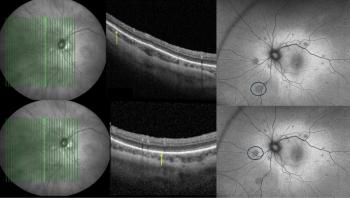
Refractive correction and patching improve VA in amblyopia
Refractive correction and patching improves visual acuity in amblyopic eyes.
Refractive correction and patching improves visual acuity in amblyopic eyes, according to a paper in the Archives of Ophthalmology.
Dr Yi Pang et al., Illinois College of Optometry, Chicago, Illinois, USA, looked at 17 amblyopic children. The patients were aged between 4 and 14 years and has amblyopia linked to myopic anisometropia.
Visual acuity (VA) was evaluated at 4, 8, 12 and 16 weeks whilst all patients wore spectacles and/or contact lenses for complete refractive correction. At 16 weeks all patients underwent patching.
Mean baseline VA in amblyopic eyes improved from 0.96 logMAR to 0.84 logMAR with refractive correction and a mean of 0.71 logMAR with additional patching. The findings demonstrated an improvement of 2.59 lines when comparing baseline VA and final VA.
Final VA was linked to baseline VA, magnitude of anisometropia and the patching compliance level. The improvement in VA was linked to patient age and presence of eccentric fixation.
Overall, 88% of patients experienced an improvement of 2 lines or more and a further improvement was discovered when patching was applied to patients who underwent refractive correction.
Newsletter
Get the essential updates shaping the future of pharma manufacturing and compliance—subscribe today to Pharmaceutical Technology and never miss a breakthrough.













































